2. Digital bodies#
assignment#
- document use of a 3D scanner to acquire a model
- document repair of 3D model mesh
- experimented with the combination of milling, laser cutting, vacuum forming and composites
- built your own mannequin
- include all the files in the documentation
acquiring a model#
In acquiroig a body model, I tried two types of 3D scanning methods. One is the photogrammetry based technique(Trnio, Recap) and the other is the depth sensor based one(Sense). I aslo made a model with makehuman
Photogrammetry technique is based on a series of photographs. Photogrammetry software can create a geometry and texture mapping from photographs. We can try it with a usual smartphone camera.
Depth sensor technique uses a light source, a light receiver and a color camera. A light source projects an object and a light receiver detects the distortion of the reflected pattern. The distortion varies based on the geometry of an object. Software calculates and generates a geometry of an object based on the degree of distortion. We have to buy a scanning device before trying it.
photogrammetry technique#
Trnio (iOS)#
First, I took a lot of photos of a model from different directions. Then I started the application and uploaded images(45 images) to merge into a 3D object.
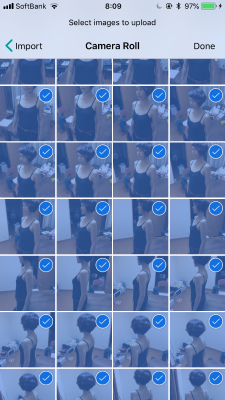
Trnio interface
The part between a body and a arm was not scanned well. Now I know that why people open arms at their side and keep arms straight around 45 degrees.

Recap Photo#
I used same photos with Trnio. Merged 3d image was much better than Trnio, but the image contained my entir room. It is embarrassing.
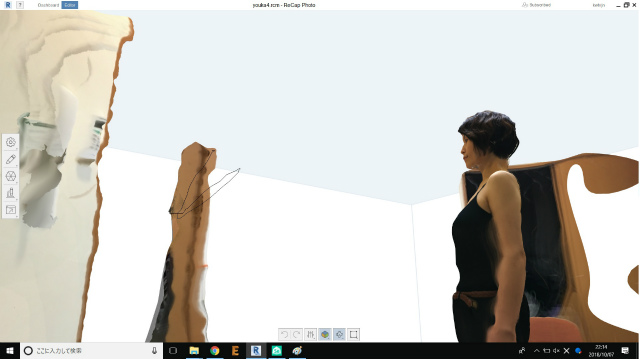
Both photo merging processes were on thier cloud platform. I felt the proess was time-consuming (about 20 - 30 minutes).
depth sensor technique#
Sense#
I have used Sense in my Fab Academy assignment and I’m still learning how to use it. After several trials, this was the best result, which I’m not satisfied at all.

makehuman#
MakeHuman is an open source 3D software. It can manipulate human human characteristics, for example, age, height, weight, clothes, eyes, hair, teeth, eyebrows, eyelashes and everything. Here is 1-year-old me.
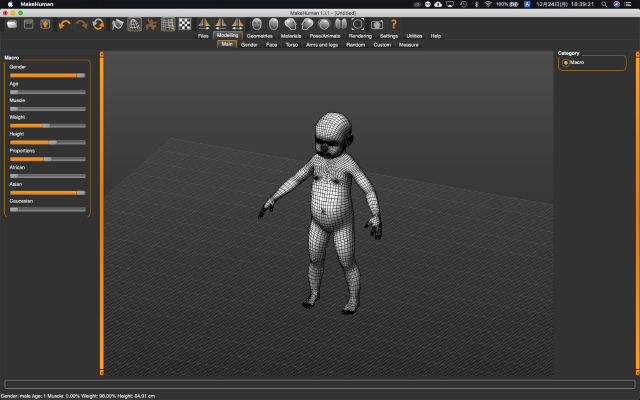
This is present.

Ten years from now, 50% overweighted and less muscle.
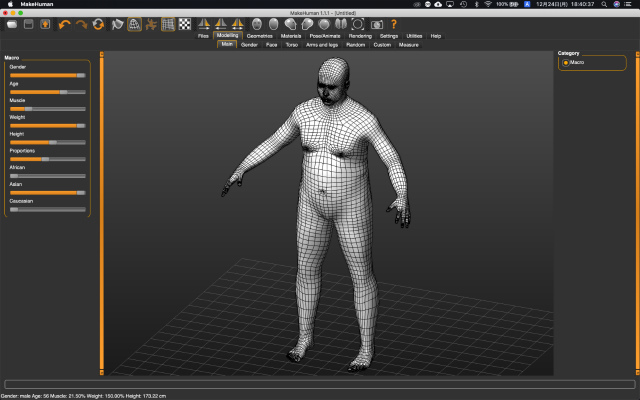
It can export a file as STL file. I edited it with Rhinoceros.

I modified a body baesd on a mesh repairing tutorial.

Here are an original and modified STL files(small size).
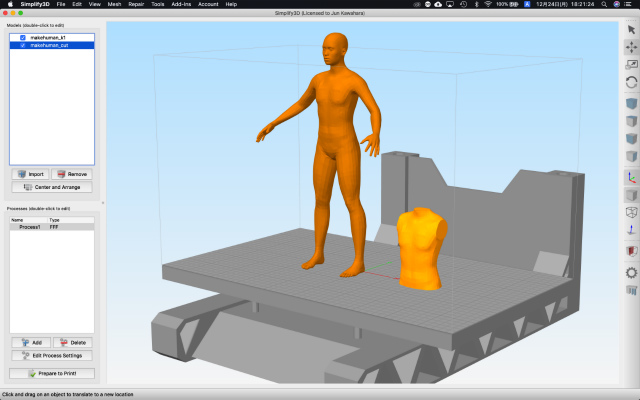
mesh repairing#
I used a model scanned by Trnio. Trnio itself cannot export .obj or .stl file. First, I uploaded a integrated image from Trnio to Sketchfab, then downloaded a file as .obj. I edited .obj file with meshlab. I have used it a bit to check a model if it was watertight or not. I didn’t realize that the software was really useful tool until now.
I selected unwanted faces to remove.
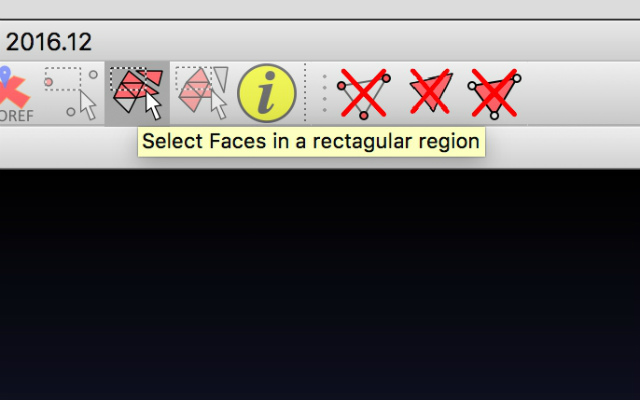
Red faces are selected area to be removed.

Then, I deleted selected faces.
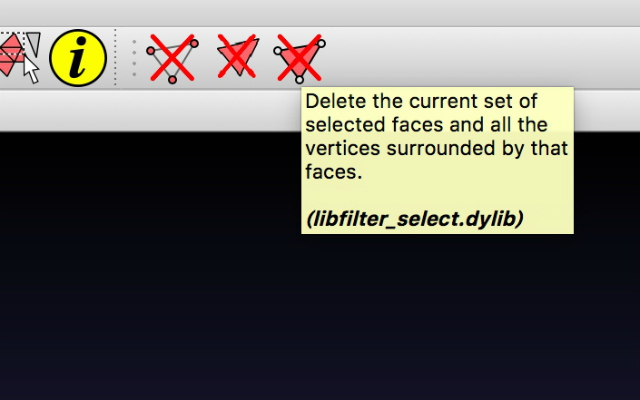
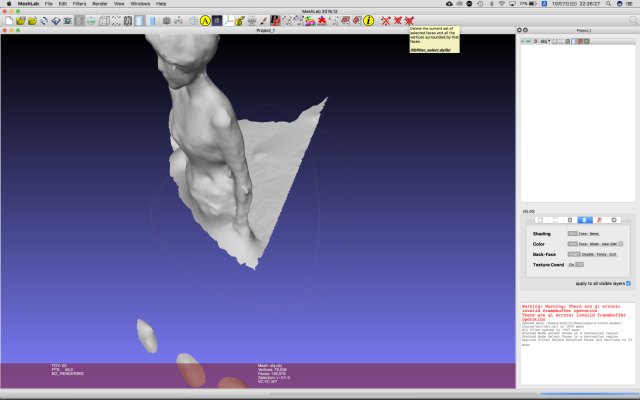
I repeated the process many times and get a model to be lasercut.
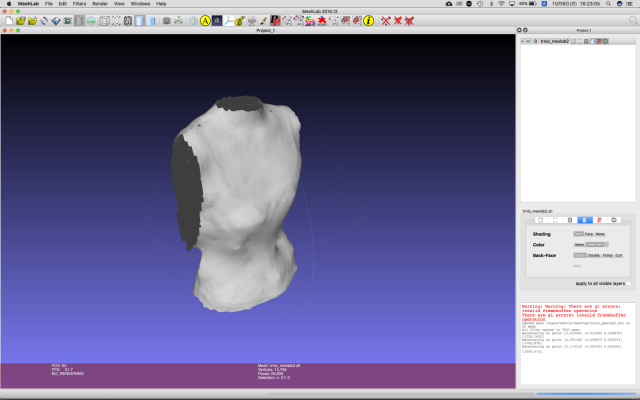
mannequine#
I lasercut cardboards to make a mannequine.
Laser cutting machine is Trotec Speedy 100R.
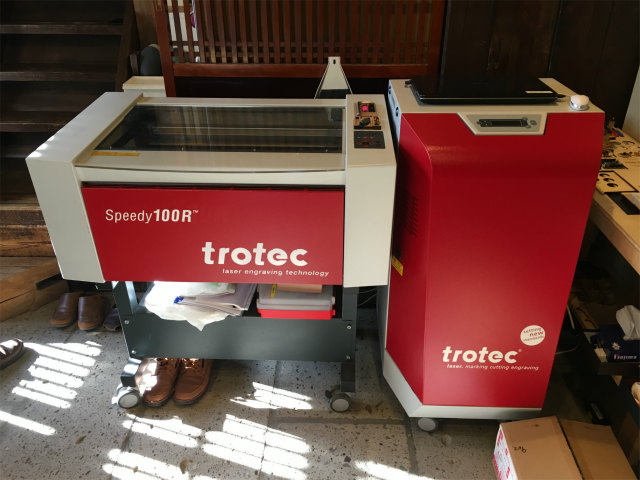
Before lasercutting, I made a interlocked slices model with SLICER for Fusion 360. You can modify slice direction, spacing between slices.
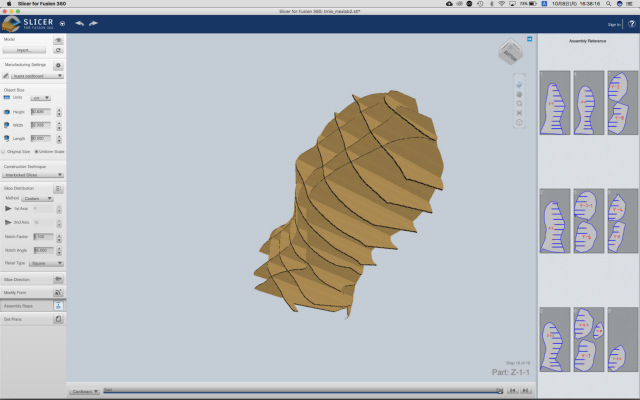
Press “Get Plan” button, at the bottom of the left side column.
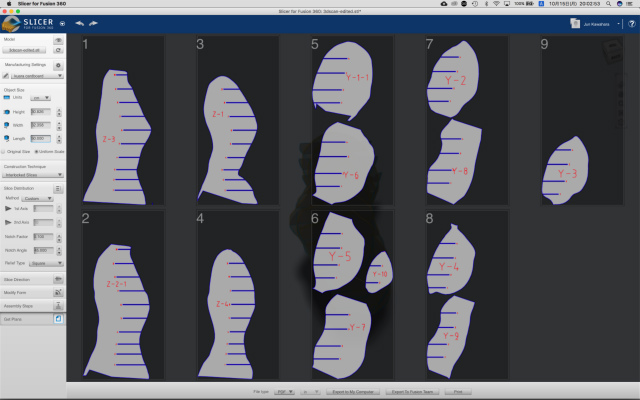
I exported file as PDF in my computer.

Open the file in CorelDraw and modify the width of red line to 0.001 mm so that the lasercutter can recoginize the line as the cut job. Then, “Print.”

Laer cutting settings are as follows.
cardboard thickness: 3 mm
power: 85
speed: 2
frequency: 5,000 Hz
Here is a making movie.
My torso doesn’t look like a human body, but a chunk of meat because my scanning was not good at all, which also made editing a 3d model difficult.

useful links#
files#
- 3d scan file (.obj)
- edited 3d scan file (.stl)
- laser cutting schematic from SLICER for Fusion 360 (.pdf)